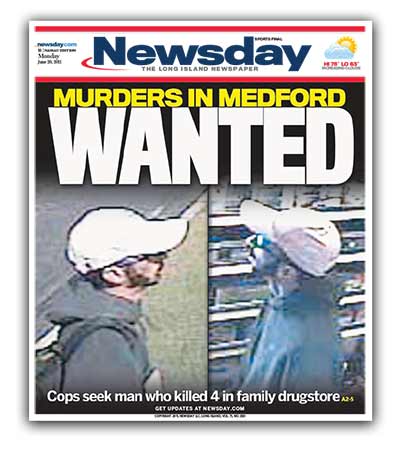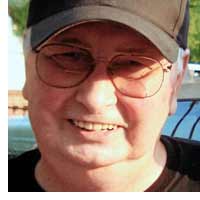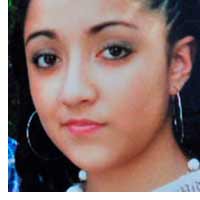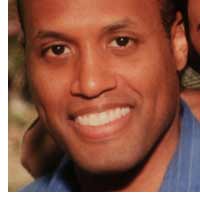On Father’s Day 2011, Long Islanders learned the news of a horrific shooting at a pharmacy in Medford: four people murdered, seemingly at random, the suspect still at large.
What unfolded was a three-day manhunt. By the time two suspects were taken into custody, another story would come to light: that of LI’s growing epidemic of prescription painkiller addiction.
Here’s a look back at what one top county prosecutor called “the most cold-blooded robbery-murder in Suffolk County history.”
Father’s Day tragedy

Shortly after 10 a.m. on Sunday, June 19, 2011, Melinda Brady (pictured), then 29, drove her recently unemployed husband, David Laffer, then 33, to Haven Drugs on Southaven Avenue in Medford.
Wearing a fake beard, white baseball cap and sunglasses to conceal his identity, Laffer walked into the pharmacy and exchanged a few words with pharmacist Raymond Ferguson, 45, according to police, citing a surveillance video.
According to police reports, Laffer shot Ferguson in the abdomen, then twice shot clerk Jennifer Mejia, 17 and just days from graduating Bellport High School, before shooting Ferguson twice more, saying nothing as he did so.

As Laffer began stuffing pain pills into a knapsack, two customers entered the store — Bryon Sheffield, 71, and Jaime Taccetta, 33. Laffer “came up behind them,” Suffolk chief trial prosecutor John Collins would say in court, "and
executed them by shooting them in the back of the head."
Taccetta's fiance, James Manzella, had just dropped her off at the drugstore when he noticed a thin, unshaven young man walk out, according to an affidavit filed with the murder complaint against Laffer; the man was last seen running east on Southaven
Avenue. Brady would soon drive Laffer away from the scene.
Manzella thought Taccetta was taking a long time and he went inside the store. "I saw her laying on the floor with blood near her," Manzella wrote in an affidavit.
“I thought she had a seizure, but then I saw a man in a lab coat also on the floor with blood around him. I freaked out."
The first 911 call came in at 10:23 a.m. By Sunday night, police released surveillance footage of the mystery suspect in disguise and asked for the public's help in finding him. Newsday ran images on Monday's front page with the headline "Wanted".
In all, Laffer had killed four people and stolen more than 10,000 hydrocodone pills.
A manhunt across LI
The groundwork for identifying the shooter began within hours of the massacre, police said.
Detectives cross-referenced hundreds of painkiller prescription records, tips and registrations for .45 caliber handguns because of the type of bullets found at the scene; drug users were an immediate focus of the investigation.

By Monday evening, they had a short list of suspects, including Laffer, police said. Detectives then began approaching the suspects' associates, looking for information on drugs or recent activities. (New York City's Office of the Special Narcotics
Prosecutor had also shared information with police about Laffer being a large purchaser of narcotics in the Medford area, including at Haven Drugs, sources told Newsday.)
"It was basic police legwork the detectives worked on 24 hours a day and they'll continue to do that until the case is concluded," Det. Lt. Gerard Pelkofsky of the Suffolk police homicide squad said.
The crime was solved in part because Laffer left two fingerprints on a piece of paper as he stole prescription opiates from the drugstore; the paper had fallen from the counter near Ferguson's body. It matched prints the Army veteran
gave when he applied for a pistol permit in 1999, authorities said. "Despite the defendant’s best efforts to wipe the prints from the scene," Collins said, he missed the piece of paper.
Suspects and victims come to light
Laffer and Brady lived on Pitchpine Place in Medford, just two miles from Haven Drugs. In the days after the crime, they had resumed their suburban lives, waving at neighbors and working around the yard, sources say.
By Tuesday — two days after the shootings — Suffolk police had the Laffer house under surveillance.
The next day, helicopters hovered overhead as dozens of officers raided the house; Laffer tried to grab an officer's gun, the court complaint said, and police hit him until he let go of the weapon. The police soon emerged from the house with Laffer
handcuffed. Brady was also taken into custody.
Inside the home, police found multiple guns and ammunition, then-Suffolk police Commissioner Richard Dormer said. Among them was a disassembled .45 caliber handgun police believe was used in the shootings, Collins said. Ballistics tests of spent bullets
at the crime scene were also tied to Laffer, and the tests "made a connection" to Laffer's 1999 gun permit filed with Suffolk police, authorities said.
Crime Lab investigators comb through sewers in front of Laffer’s home. Photo by James Carbone
Charged with first-degree murder and resisting arrest, among other things, Laffer showed "no remorse," Dormer said. Laffer refused to talk to police, but Brady — charged with third-degree robbery — suggested that Laffer's crime was to
help her get prescription painkillers for a chronic ailment. "He lost his job and I was sick," she said, adding that she thought the plan was just for them to rob the pharmacy, not kill anyone.
Police described Brady and Laffer as drug abusers; both told reporters they are not addicts.
Laffer in court the day after his arrest.
Brady pleaded guilty to robbery and is now serving 25 years in prison. Laffer pleaded guilty to first-degree murder and is serving life in prison without parole.
At his sentencing, Laffer listened blankly as the victims’ families spoke for two hours about the damage left behind by the murders. The victims were:
Bryon Sheffield

Sheffield, 71, was giddy to have his wife, Sheila home, finally. His wife's heart surgery had been postponed once, but now it was over, and she had come through just fine. He was eager to care for her, and his first task Sunday morning was to
pick up her medication.
Bryon and Sheila were high school sweethearts who would have been married 50 years on July 16, 2011. They had two children, Laura and Brian. The week before the shooting, Sheila underwent triple bypass surgery. Bryon spent much of that time at the
hospital, doting on her. But when he was at home, he said he wandered around like he was lost — because without her, he was.
He was a devoted husband and brother. He was retired auto repair shop owner who was also a good carpenter who built elaborate displays for his brother’s floral business.

Jennifer Mejia
Mejia had just finished her last week of high school. She spent June 14, a Tuesday, at Bellport High signing yearbooks and talking about summer plans. But first, she had a few more work shifts. Sunday morning, standing behind the counter at Haven
Drugs, she had two things to look forward to: prom and graduation.
Mejia, 17, planned to attend community college in the fall. She wanted to work in the medical field. She had worked at Haven Drugs for about two years. She sent her first paycheck to her grandmother in El Salvador. A devout Catholic, she visited El
Salvador on a mission in 2010, and later, started donating a portion of her paycheck to needy residents there.
Raymond Ferguson

Ferguson, looking to unwind after a long workweek, spent Saturday night with co-workers from Waldbaum's pharmacy. Ferguson, with no children of his own, had agreed to work Sunday at Haven Drugs so that another pharmacist could spend Father’s Day with his family.
Ferguson, 45, who was known for his smile, still gathered with classmates from St. Francis Preparatory School in Fresh Meadows, Queens, a few times each year. He was known as a steady presence in chaotic situations and for acts like helping an elderly
woman when her car broke down, which he did about a month before the shooting.
He and his wife, Viedya Sabrina Quail-Ferguson, who were separated, did not have children but she said he cherished his brother’s kids.

Jamie Taccetta
Taccetta and her fiance were planning one whopper of a Father’s Day barbecue. They had spent $300 on groceries — lamb chops and filet mignon — for the big day. They were planning to test-drive a Kia SUV Sunday morning,
but first they stopped at Haven Drugs to get her regular thyroid medication.
Taccetta, 33, lived with her fiance, Manzella, in Farmingville. Their wedding was less than four months away. Manzella adored her. Shortly before the shooting, friends said he had told them she would be “the perfect wife.”
Taccetta had two daughters — Miranda and Kaitlyn — with her first husband. She was a physical therapist’s aide who was planning to have more children with her future husband.
A spotlight on LI’s addiction problem

In the year after the shooting, the drugs continued to flood the Island in record amounts, data showed.
Law enforcement agents arrested doctors who they said helped supply the illegal pill market. Lawmakers in Albany passed sweeping legislation to check illegal trade in the drugs,
and wary pharmacists toughened security. But officials acknowledged it would be a years-long battle to stem the crisis.
In 2011, there were 269 overdose deaths linked to prescription drugs out of 329 opioid deaths overall.
Fast forward to 2016, and opioid-related overdose deaths remain high — there were nearly 500 on Long Island last year — but the culprit has shifted to heroin and its more powerful offshoot, fentanyl, a drug 50 times as strong as heroin. Fentanyl
alone was responsible for 233 of those deaths.
The Nassau and Suffolk police departments are tackling the crisis by trying to take down drug dealers and collaborating with other agencies on drug busts.
But the rise in the overdose tally comes despite the wide use of naloxone, the treatment for opioid overdoses that is administered through a shot or nasal spray. Emergency responders saved more than 1,200 overdose victims from death with the antidote
last year, officials said.
Published: Friday, June 16, 2017 Design: Matthew Cassella and Seth Mates Video: Edited by Matt Golub Production: Erin Geismar and Seth Mates
























